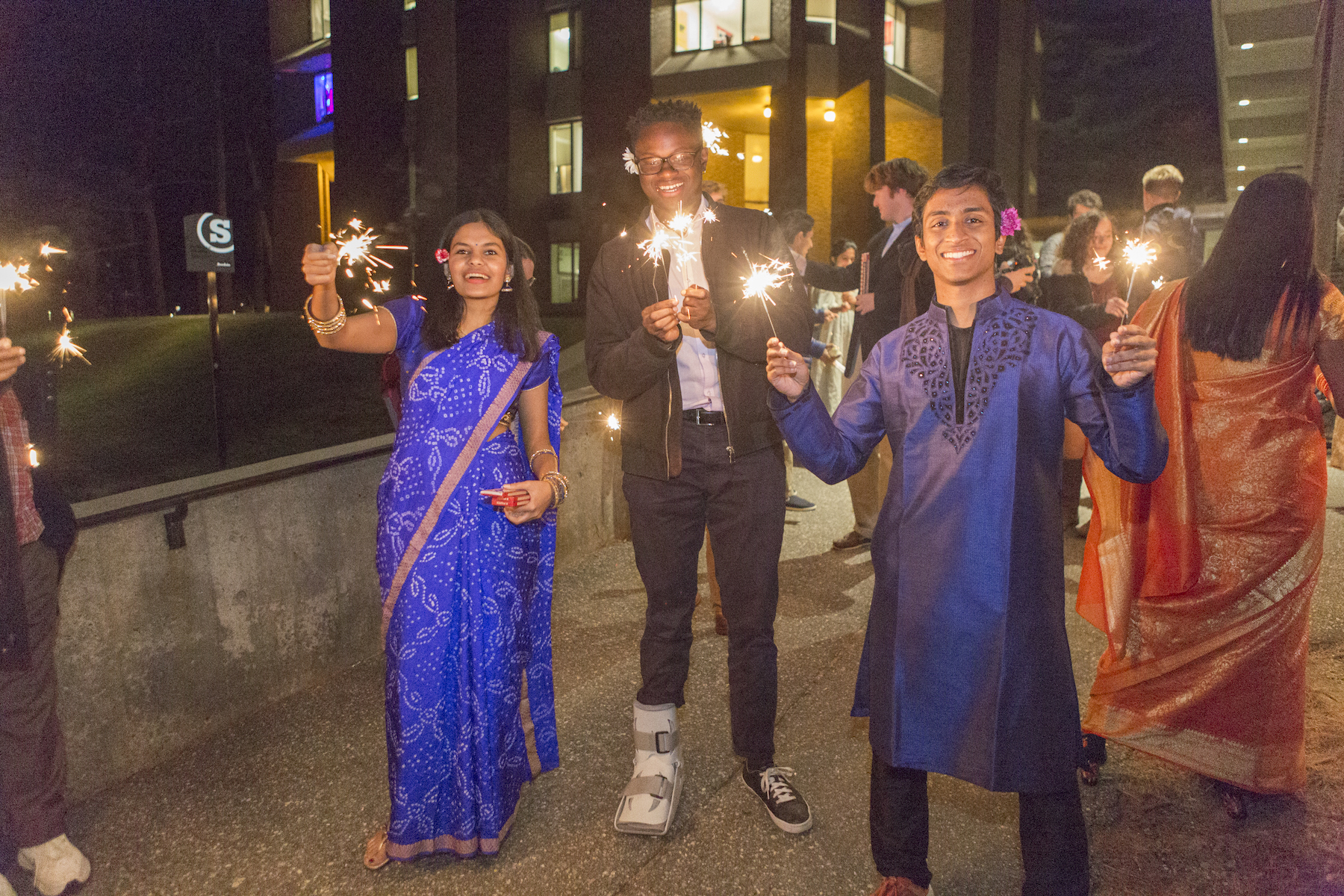Spinning the myths of a Desi Diwali: the festival of lights
November 16, 2018
 Courtesy of Dennis Griggs/Tannery Hills Studios
Courtesy of Dennis Griggs/Tannery Hills StudiosWhen Shankar Mahadevan hits the chorus of the iconic Bollywood ballad “Desi Girl,” impassioned drums and raucous claps fade into the titular line that’s captivated South Asian families and popular media for the past decade: “Dekhi Lakh Lakh Pardesi Girl / Ain’t Nobody Like My Desi Girl / Sab Toh Soni N Saadi Desi Girl.”
Translation: We’ve seen millions of foreign girls, but ain’t nobody like my Desi girl / The most beautiful and down-to-earth girl is an Indian girl.
Despite its silly sexism—the song appears in Bollywood flick “Dostana” in reference to a posh and sparkling Priyanka Chopra torn between two slick male suitors—I have, for a time, felt a fondness for the song; there’s a slight, if twisted, pride in the glimmering myth of the Desi girl: the woman who, in her sparkling sari, with her shaking hips and undeniable allure, puts all of the white women dancing behind her to shame. She simply does it better. (She is also Priyanka Chopra.)
It is this song that I catch outside of Thorne Hall in early November. It is Friday evening and one of the first frigid days of the season. At first it is off-putting; the sound of even westernized Bollywood feels out of place here, amidst these harsh winds. I have come for the South Asian Student Association’s annual Diwali celebration. That soft warmth beckons me in.
In India, such celebrations take shape with skies ablaze: fireworks, candles, burning effigies. Here, we dance to beats like “Desi Girl” under the soft glow of string lights and eat tikka masala from Shere Punjab. Somehow, we make it work.
So stark against the steely November sky is the fabric. Abrupt yellows, biting reds, deep mauves and dreamy navy. You do not see cloth like this in New England; it is not economical. As the night goes dark, I am reminded that Diwali must occur on the darkest day of the month. This is, I think, its entire point and its reason for being: to revel in the brilliance of light defying darkness.
“We light the lamps to dispel the darkness of that day,” says Associate Professor of Asian Studies Vyjayanthi Ratnam Selinger as she opens the evening. “But for me, Diwali has always been both a new beginning but also a culmination. The time is auspicious in so many ways.”
In three parts, she spins the myths that define the day: Prince Rama’s defeat of the demon king Ravana and the end of his exile on the island Lanka—“we welcome him back with lamps to light his way,” she says. Speaking in the present tense, she reminds the room of myth’s contemporary relevance in modern day South Asia. She then points to Krishna’s defeat of another demon-king, Narkasur, and, finally, to Lakshmi—principal goddess of wealth and prosperity.
And then, in closing, she reminds us not only that this day is not just for Hindus—celebrated across India by Sikhs, Jains and Hindus alike—but also for those away from our homelands. It is a time for immigrants to come together and share stories, she says, stories about where we come from and where we are now. The winds outside are howling.
Growing up with an Indian mother and American father, I developed a habit of understanding Indian holidays only through comparison with those central to Judeo-Christian traditions. Diwali, with its abundance of lights and sweets was, by my measuring stick, like Christmas. But despite my keen understanding of the national Indian holiday, I had never celebrated Diwali properly until I was 16, in high school, and in the throes of befriending the new girl in school—now my best friend—Bianca, who had recently moved from Mumbai.
Bianca laughs when Hindi words fumble out of my mouth and tells me stories of her neighborhood in Bombay. It is the same neighborhood of my mother’s birth. She lets me in on the lovely snack of pani puri, street food my mother never fed me as a child. When we talk about first impressions, she identifies my chappals—Indian sandals—as a primary marker of difference. “I thought you were another alt Austinite appropriating Indian culture—you don’t look Indian,” she tells me.
On that Diwali years ago, on the darkest day of the month, we drove to the local Hindu temple. Donning our finest cholis, we bowed before a pantheon of gods—Ganesha, Vishnu, Ram and Sita—in the temple and craned our necks to watch that sulfuric pewter zip into the late night.
Friday evening at Bowdoin, I am surrounded by South Asians of varying faiths, Hindus, Muslims, Atheists, Christians, of various national tongues and nationalities, who come together to celebrate the festival of lights. Bianca is not here, but she is with me, wondering what it means to be a Desi girl, or to be Desi at all. I ruminate on the myths that we conjure every day—myths about ourselves, myths to help us make sense of why we land in this cold place.
I settle on this: with Bianca or at Bowdoin, in the sweet heat or piercing frost, there is a certain magnetism to the sharing of these dreams that are just as much grounded in myth as they are reality. In the quiet flicker of the hand-held fireworks we share after dinner, I see brazen faces. The light links us. Like the shining path that welcomes Ram home, ours is one miles in the making. I feel, in some ways, that we have already arrived.
This year’s Diwali celebration was organized by the South Asian Student Association, led by Swapnika Mallipeddi ’19 and Tharun Vemulapalli ’19.

Comments
Before submitting a comment, please review our comment policy. Some key points from the policy: